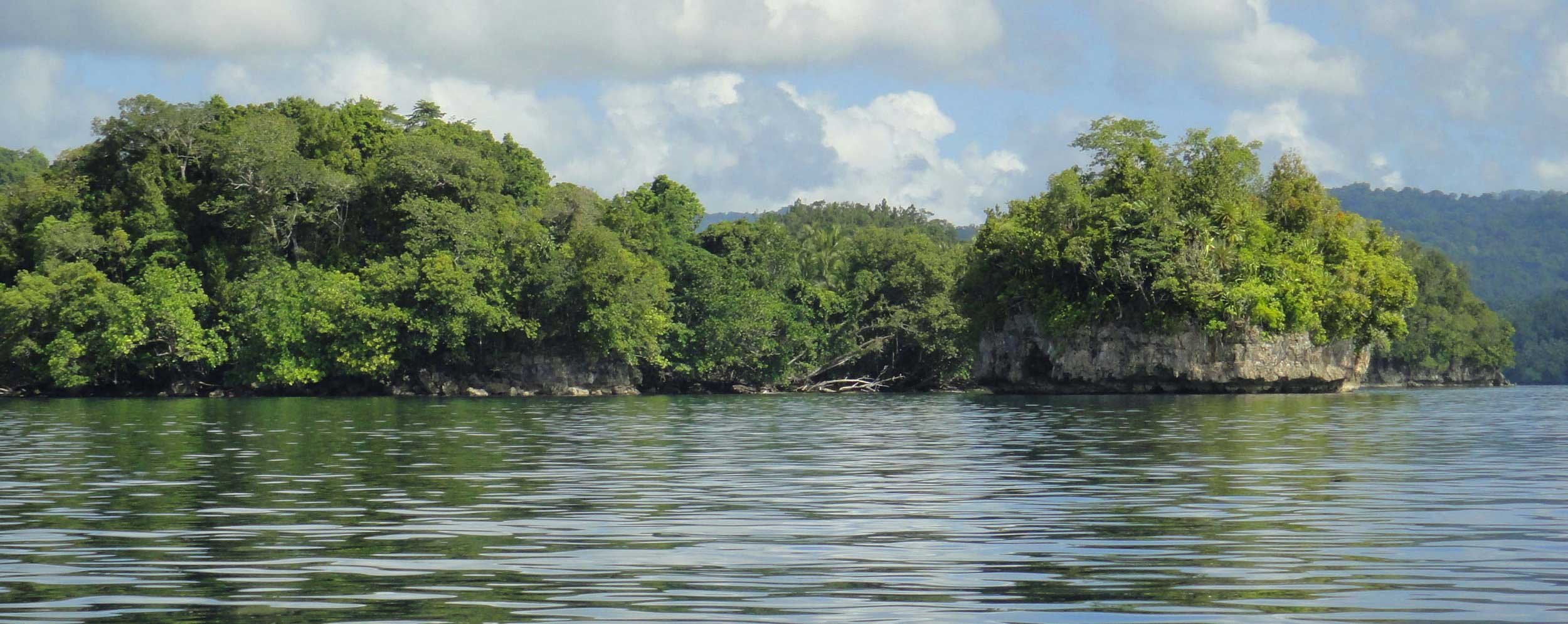
Babatana Rainforest Conservation Project
The Forest
Protecting tropical lowland rainforest on South Choiseul, Solomon Islands. Habitat for 19 of the 21 frog species found in the Solomon Islands, with 11 identified in a rapid biodiversity survey in the project site.
The forest is home to many bird species including: Midget flowerpeckers (Dicaeum aeneum aneum), Golden whistlers (Pachycephalus pectoralis), Song parrots (Geoffroyus h. heteroclitus), Crested cuckoo doves (Reinwardtoena crassirostris), black and white monarchs (Monarcha b. barbatus), White–billed crows (Corvus woodfordi woodfordi), Blyth’s hornbills (Aceros plicatus mendanae), Eclectus parrots, fruit doves, and lorikeets. Also present are Mackinlays cuckoo dove (Macropygia mackinlayi arossi), Willy wag-tails, and kingfishers.
Choiseul has the highest number of native mammals including native giant rats, the Giant horseshoe bat (Hipposideros dinops). 14 species of reptile were recorded at the site including green bellied skink (Emoia cyanogaster), brown tailed copper striped skink (Emoia cyanura), and Pacific black skink (Emoia nigra). The mildly venomous Solomon red krait (Salomonelaps par) was also present. The saltwater crocodile is also abundant in the rivers closer to the sea.
The People
This project is owned by the tribes from the Babatana language group on south Choiseul. This project was led locally by the Sirebe Tribe who were the first tribe in the Solomon Islands to establish an official Protected Area under the Solomon Islands Protected Areas Act.
Following the leadership of the Sirebe Tribe, other tribes have joined this initiative including Siporae, Vuri, Padezaka, Garasa, and Lukulombere.
Their land and coastal environment provides their main source, and sometimes only source of food, income, medicine, building materials, water, and firewood.
The Location
Babatana Rainforest Conservation Project is located on the southern coast of Choiseul Island, in the Solomon Islands.
Technical Stuff
Babatana Rainforest Conservation Project
Project Name
6,863 ha of protected rainforest
Project Area
Sirebe Community Company Ltd (representing Sirebe Tribe)
Project Owner
Nakau (overall coordination) Ekos (Technical lead), NRDF (community and forestry lead)
Project Developers
Babatana Area, South Choiseul, Choiseul Province, Solomon Islands
Project Location
Continuation of conventional logging
Baseline Scenario
Permanent forest protection
Project Scenario
Improved Forest Management: logged to protected forest (IFM-LtPF)
Activity Type
Carbon sequestration; carbon emissions reduction; biodiversity conservation; water quality protection; climate resilience
Project Benefits
Not applicable
Trees Planted
108,895 tCO2e
Carbon Credits Issued
Carbon Credit Standard
CPMA (Sweden), and Shawn McMahon
Verifier
Carbon Credit Registry
Credits available for Business Clients
Carbon Credit Status
Follow The Money
Rainforest conservation costs money. The main cost elements are:
Conservation management such as invasive species control, and safeguarding against illegal logging.
Opportunity costs. This is the logging revenue for community economic development that the landowners had to give up in order to choose the conservation option.
Measurement, reporting and verification costs of an internationally certified project.
Carbon credit revenue goes to cover these costs.
Ekos served as technical lead for the development of this project. This was a fruitful partnership between Nakau, NRDF, Live & Learn International, and the local community. Ekos also co-founded Nakau along with Live and Learn International, but we are no longer a shareholder.
The project would not have been possible without each contributor to this partnership for nature.









